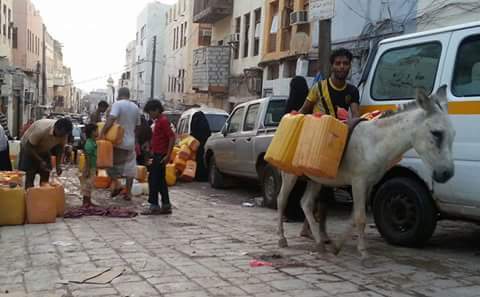A report issued by the Food and Agriculture Organization of the United Nations (FAO) revealed that the Yemeni rial in government-controlled areas sharply deteriorated in October, losing 25% of its value, which led to unprecedented increases in the prices of essential goods such as food and fuel, exceeding citizens’ purchasing power.
The report, published by the humanitarian platform ReliefWeb, showed that the Yemeni rial declined by 25% against the dollar over the year and by 36% compared to the average of the past three years. This drop is primarily attributed to depleted foreign exchange reserves, exacerbated by the ongoing financial crisis, leading to a significant increase in food prices in September. Food prices surged by 7% to 28% compared to the same month last year and by 23% to 54% compared to the three-year average.
The report indicated that the cost of the basic food basket in government-controlled areas rose by 2% compared to the previous month, by 18% annually, and by 35% compared to the three-year average. Governorates like Marib and Taiz experienced price increases of 27%, while prices rose in Hadhramaut by 17% to 25%, in Al Mahrah by 25%, in Shabwah by 24%, and in Lahj by 17%.
Regarding fuel, diesel prices increased by 5% in September compared to the previous month, by 13% year-over-year, and by 45% compared to the three-year average. The report attributed these increases to the sharp depreciation of the local currency and a decline in import volumes through Aden Port, a primary entry point for essential goods.
Livestock prices also rose in government-controlled areas, with prices of young goats and sheep (aged 6 to 12 months) increasing by 1% to 3% in September, in contrast to a decline of 2% to 3% in Sanaa-controlled areas. The report noted that small livestock prices surged by 30% year-over-year and by 52% to 70% compared to the three-year average, while prices in Sanaa-controlled areas remained stable or slightly declined by 2%.
The report concluded by highlighting a sharp decline in the purchasing power of households in government-controlled areas, as the cost of the minimum food basket surpassed citizens’ income levels. Additionally, wages for temporary labor, both agricultural and non-agricultural, remained unchanged in all government-controlled areas compared to the previous month.
